GREATER TEXAS FOUNDATION | Annual Report 2021
FEATURES
Rural Promise
Advocates and changemakers across the country and in Texas are coming together to create models and programs that make college more affordable and accessible for students from all backgrounds, including those in rural regions.
One such model gaining momentum and having a positive impact on student success is the Rural College Promise model.
College Promise programs, when equitably designed as a regional talent strategy, bring communities together to collectively take ownership of the secondary to postsecondary transition for all students.

These programs promote a college-going culture through early outreach to secondary students, providing wraparound supports, and offering last-dollar scholarships to ensure all students have access to postsecondary options aligned with the needs of the regional workforce.
In 2021, Greater Texas Foundation awarded over $3 million to The Commit Partnership in Dallas to support replication of their successful promise program in three rural communities. The Commit Partnership worked closely with The Rural Community College Alliance and Economic Mobility Systems to implement their simple “Promise in A Box” program at rural North Central Texas College, Grayson College, and Tyler Junior College.
 In an interview with Greater Texas Foundation staff, Dr. Eric Ban, Executive Director of Economic Mobility Systems at The Commit Partnership, shared four reflections from his work in supporting the launch of the Rural Promise in A Box program.
In an interview with Greater Texas Foundation staff, Dr. Eric Ban, Executive Director of Economic Mobility Systems at The Commit Partnership, shared four reflections from his work in supporting the launch of the Rural Promise in A Box program.
1. This is a Texas talent strategy
There’s a direct correlation between degree attainment and regional prosperity.
Dr. Juan E. Mejia, President, Tyler Junior College
2. We are getting smarter with each implementation
The Commit Partnership is now in its fifth year of supporting Promise programs across the state. Advances and improvements have been driven by learning shared between regions of the state. For example, when Houston invests in new tools, Dallas gets the benefit of those tools. After we built the Promise in A Box technology for Tarrant County, we were able to quickly deploy it in Grayson County. What would have taken six months and a lot of money and time took 24 hours to implement.
Experience also tells us there are advantages for the three North Texas communities implementing the Promise in A Box program to work together as a cohort. Collaboration and competitive spirit are huge advantages. The participating schools will travel to each other’s campuses to share and learn. When we make the data visible and public, communities more effectively drive toward equitable outcomes for students.
3. Relationships between community colleges and school districts are an important place to start building a college-going culture
Because there are fewer resources in the rural context, you must be smart about how to use those resources. We have seen that rural community colleges have trusting relationships with schools and community partners because they rely on each to overcome limited resources. The engagement and the relationships that community college presidents have with superintendents is a really important place to start. The community colleges then work with other higher education providers to build a portfolio of postsecondary opportunities for students.
Another important point of collaboration between K-12 schools and higher education is an effective data-sharing infrastructure. Data systems in education are woefully under performing and we’ve got to do something about it together. The transition from K-12 to higher education is a messy part of the pipeline. Let’s share data to help communities solve problems at these transition points.
4. Success depends on strong leadership
Effective collaborations require strong and visible leadership. From the outset of the Promise in A Box program, leaders at North Central Texas College, Grayson College, and Tyler Junior College have made it clear that they are invested in this program’s success and understand their roles in helping the community thrive.
Dr. Brent Wallace, Chancellor, NCTC said, “I think the role of the community college is really focused around what is in our title, what is in our mission, and that is community.”
Dr. Jeremy McMillen, President, Grayson College echoed, “We are the community’s college – we are committed to building a prosperous future by transforming as many lives as possible through education.”
Dr. Juan E Mejia, President, Tyler Junior College said, “There’s a direct correlation between degree attainment and regional prosperity. When there’s degree attainment, the region does better. When we prepare students for the workforce, then there’s economic development. When we do it all together, the communities just have a better quality of life.”
We celebrate the strong leadership at all three community colleges participating in the program. These presidents are making courageous and bold leadership moves to put their communities first. It’s hard work to manage so many partnerships and relationships, and we’re privileged to be supporting their courageous community leadership.

